Let's hunt for water savings!
Basic Components
The good news is that you can reduce most water use by following a few simple guidelines. It isn't necessary to replace your entire yard to save water!!! Let's take a look at an irrigation system and see where savings can be achieved.
Controllers
An irrigation controller can also be referred to as a timer or clock. It is the brains of your irrigation system. It controls when, and how long, each valve operates. If valves are not watering when they should, or not working at all, it is likely a problem with the controller. If areas are overly wet or dry, it is not the controller’s fault.
SMART Controllers
Is your controller a “smart” or “weather-based” irrigation controller? These types of controllers change their programming automatically to adjust to changes in weather and season using ET data. They offer one of the best ways to save water in your yard. Many water districts offer rebates to help cover the cost.
A smart controller has the same controls as a standard controller, as listed above, but some or many of the controls are automatically programmed for you depending upon the controller model and the set-up information you have programmed into it.
If there is a problem with a smart controller, it will have an alert that will be displayed on the controller panel. Some models also have an audible beep.
Pipe
As you inspect all of the components, note if you see any leaks or broken pipes. Most pipe leaks occur at fittings, and most fittings are underground. Look for puddles and mushy, wet soil.
VALVES
Valves are the heart of an irrigation system. Typically, you will find several grouped together in the front yard and in the back yard. The area that is watered by one valve is called a zone, station, or circuit.
Backflow prevention of irrigation systems is required by law. Therefore, in California, you will typically find each valve has an atmospheric backflow preventer attached to it. These are called anti-siphon valves. Large landscapes may have one large backflow preventer for the entire irrigation system.
As you turn on each valve, look and listen for the following problems:
- Non-operation
- Sounds such as buzzing, thumping, and squealing
- Disconnected wires or wire ends not water-sealed
- Leaking at the valve or pipe fittings near the valve
- Water gushing out of the atmospheric backflow preventer
- One valve that water plants with two or more different levels of water needs; for example, turf and shrubs.
- Mixed sprinkler types operated from the same valve. For example, spray sprinklers and rotating sprinkler, or spray sprinklers and drip irrigation.
What if you don't know how to turn on the darn thing?!
There are two ways to operate a valve: automatically from the controller, and manually at the valve. Test both ways.
Manual operation at the valve can vary depending upon the type of valve.
Traditional valves will have a screw near the top of the valve. Start turning it to the left until a little stream of water squirts out. This relieves the pressure inside the valve and allows the valve to open. The stream will flow for as long as the valve is operating. Turn the screw to the right to shut the valve off.
Newer valves can be operated by turning the solenoid a quarter turn. There will be arrows on the solenoid indicating which direction to turn it on or off. No stream of water will come out of the valve if it is operating correctly.
Automatic operation is performed at the controller. Depending upon the irrigation manufacturer, find the manual setting for individual valves and start with zone #1. Typically, this requires turning a dial to MANUAL, tapping an arrow button to the zone number you want, and tapping START.
Sprinklers
There are a number of different types of sprinklers and the nozzles that go into them.
As you operate each zone, look for and note the following:
- Broken sprinkler heads. Usually quite obvious when you see a small geyser. A common place for a head to break is at the bottom of the head which is usually buried, or at the top of the head where a nozzle has blown off.
- Tilted or sunken sprinklers
- Blocked sprinklers from plants or lawn ornaments.
- Misting or fogging – This is caused by high pressure
- Hissing or other weird noises
- Rotating nozzles that are stuck and not rotating – Caused by debris in nozzle or simply a malfunctioning nozzle.
- Mixed nozzles – Causes overly wet and dry areas
- Same type of nozzle (all spray, all rotor), but different manufacturers
- Different types of nozzles (a few spray nozzles mixed with a few rotary nozzles or even drip)
- If on a slope, or even a slight elevation change, the lowest head or heads drool after the valve is shut off
- Sprinkler water is not reaching adjacent sprinkler heads. Each sprinkler should throw water far enough to reach the sprinklers adjacent to it.
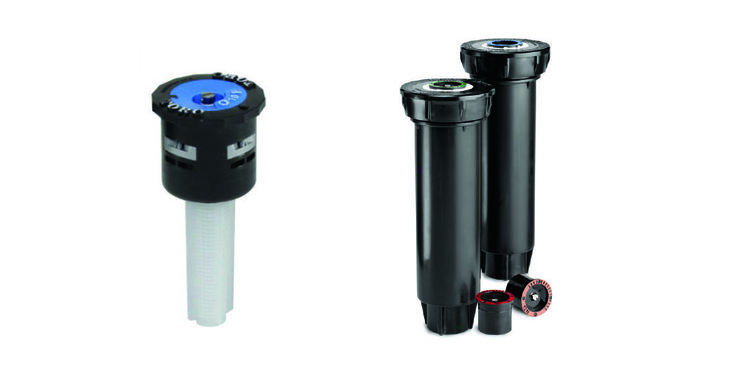
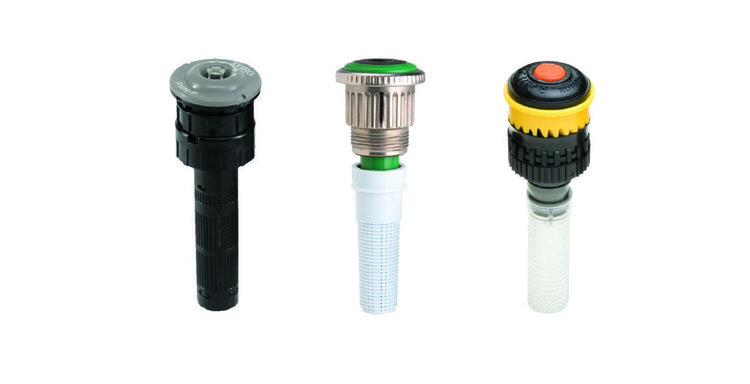
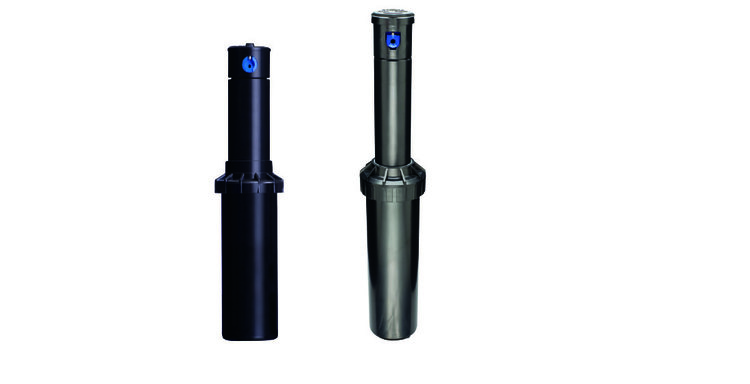
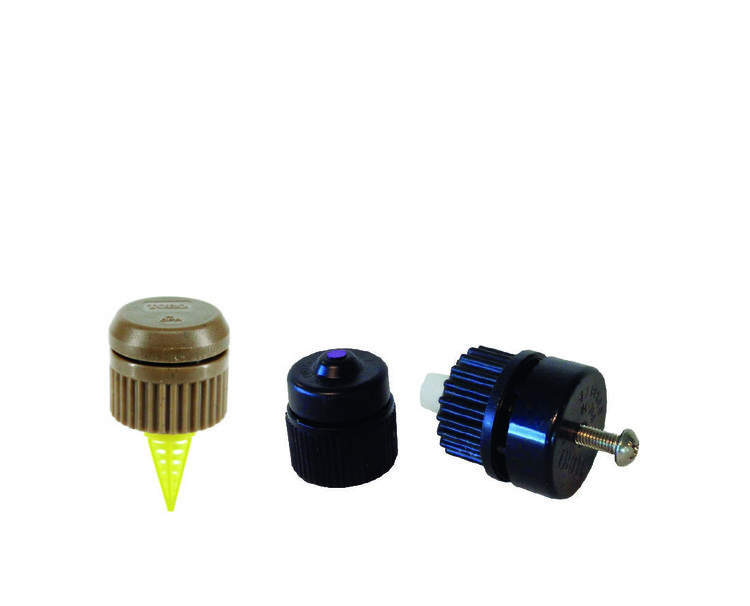
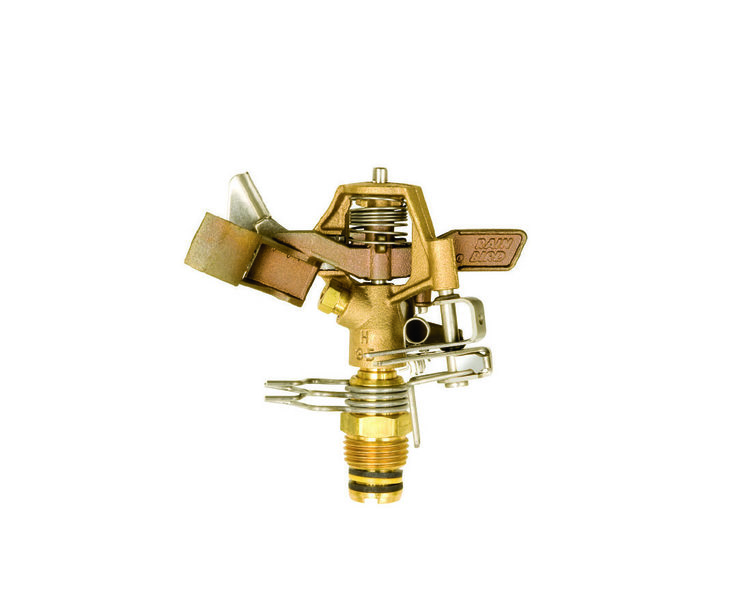
BUBBLERS
Bubblers put out a lot more water per time than drip irrigation, essentially flooding an area with water. As long as the area is level, and you are not trying to completely saturate a large area like a lawn, bubblers have advantages. They work well for small or narrow planters where you don’t want water hitting windows, fences, and sidewalks. They are easier to maintain than drip irrigation because they are very sturdy, rarely clog, and they don’t need a drip irrigation valve set-up with a filter and low-flow pressure-regulated valve. Their output type can be either flood (as pictured) or stream.
Image courtesy of The Toro Company


